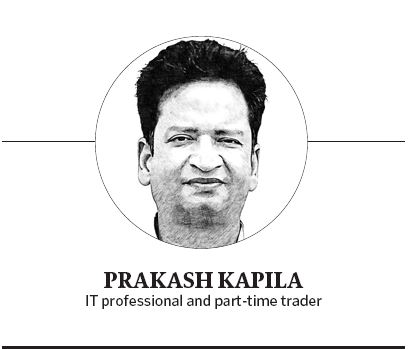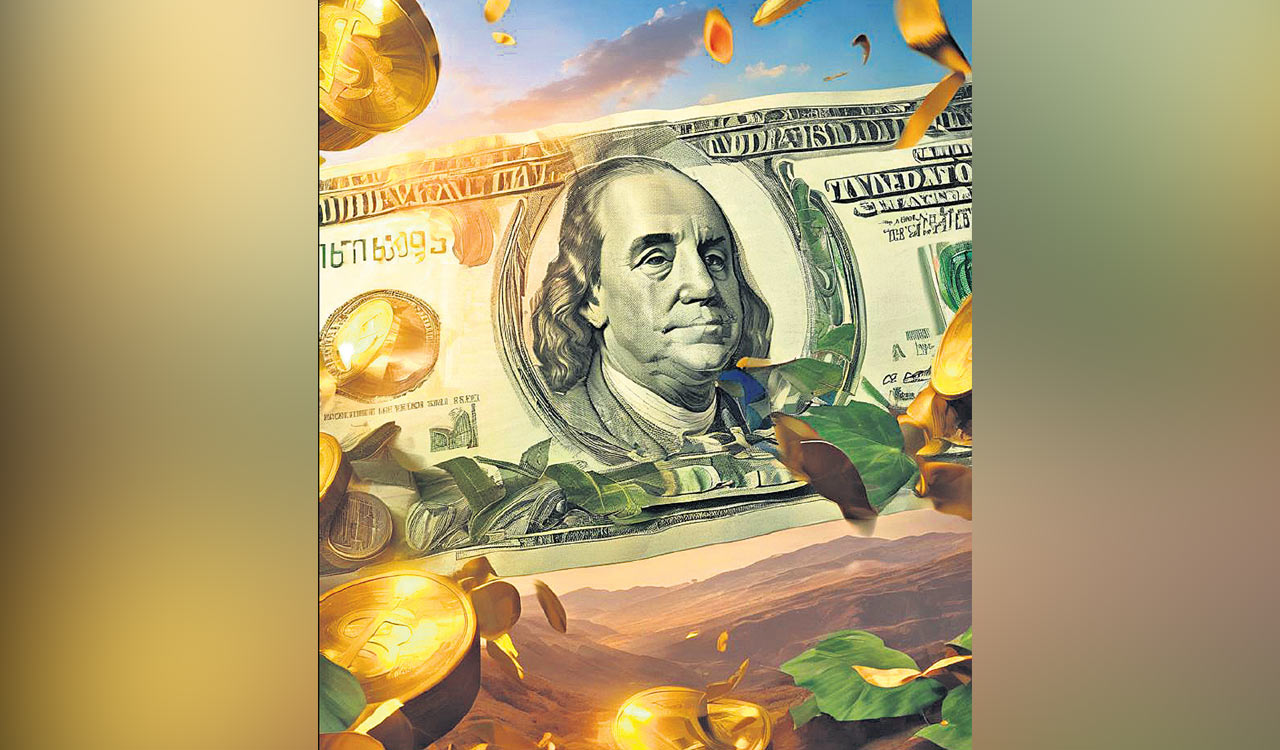Apart from demand, it’s the actual traders who make the greenback powerful and most sought-after currency
Published Date – 9 February 2024, 11:30 PM

By Prakash Kapila
Federal Reserve chair Jerome Powell recently said on 60 Minutes that two things are important for the US to remain a superpower: Finance and Military. “One is I think we need to just remember that we have this dynamic, innovative, flexible, adaptable economy. More so than other countries. And this is the big reason why our economy has come through so well,” he said.
The other is the support it gives militarily to other governments. “Since World War II, the United States has been the indispensable nation supporting and defending democracy, security arrangements, and economic arrangements. We’ve been the leading voice on that. And it is clear that the world wants that,” he added. For any country, its strength is military, followed by its currency and then its USP (unique selling proposition). For example: oil for Saudi Arabia and Qatar.
De-dollarisation
Amid the hysteria on de-dolarisation, Goldman Sachs’ had called it “lots of talk (again), not a lot of action.” It may be worth noting that China is the world’s largest exporter but it cannot risk its currency to appreciate, unlike the US which is a net importing country. For this reason, Chinese President Xi Jinping has the Belt and Road Initiative and is incentivising domestic consumption but with little success. (www.gsam.com)
India too has embarked on a campaign to internationalise rupee, as usual with huge expectations, to reduce dollar dependence but it’s a long way to go — the total foreign trade in rupee is less than 2%. India’s external debt stood at $629.1 billion, as of June 2023, to be paid in dollar. This shows the reluctance of the world markets to adopt rupee for transactions which is evident in Saudi/Iran and Russian oil deals (rbi.org.in)
The daily volume of currency trading done worldwide is 6.6 trillion as per The Bank for International Settlements, while for stocks, it’s $404 billion (World Bank) or $0.4 trillion, which means currency trading is roughly 16.5 times larger than the stock market. Of the 6.6 trillion, YEN-EUR, EUR-USD, USD-JPY and USD-GBP account for 70%. Among the currencies, only the US dollar (with 23%), Euro (15%) and the Japanese yen (10%) stand out while all others pale in comparison with them with below 2%. And of the 10 pairs of instruments, covering 65% of the total volume, nine of them have dollar as one side of the trade. Usually, currency trade is done in pairs of instruments (currency).
Making it Strong
So what is this currency and why is it the pride of a country? Currency in simple terms is the ‘instrument’ that is used to value (price to pay for goods and services) something or anything — wood, rock, air, water, house [goods], ideas, advice [services]. A few countries such as Venezuela, Argentina and Colombia, which are gripped by socioeconomic crisis and political unrest, regularly devalue their currencies. During the 1990s, India’s Parliament was stalled for days over currency devaluation when Dr Manmohan Singh was the Finance Minister.
The strength of a currency determines if the country has the leverage to use the ‘debt to GDP’ ratio. For example, the US has 129% or its debt/GDP is equal to 1.29, ie, for every $1 earned, the US is spending $1.29. Still, the dollar is very stable because the debt is in its currency and the bank is Fed. It’s a cause for concern for many countries if their ratio is even 50%.
Japan is an exception. Despite being a developed country, it keeps its currency weak. Its economy depends on exports rather than domestic consumption. A cheap budget hotel will cost around 5,000 yen while the same in India will be around Rs 300. When currency is lower you have to give more money even for domestic demand. Inflation does not play a part here. This brings us to Balance of Payments (BoP), which is imports minus exports. When the BoP is negative, it is good to have your currency downwards, but when it is positive, your currency must be strong.
Demand and Supply
Another aspect which determines a currency’s strength, and which does not depend on BoP is demand and supply. For example: bitcoin is high because of limited supply. Demand for dollar is what makes it the most sought-after currency. Four currencies dominate the foreign exchange market — dollar, yen, euro and pound, and almost all currencies trade against them.
Europe and the US together accounted for 40% of the world trade for many decades while for China it was 19% during its peak (2016- 2021). It is interesting to note that China’s currency is not heavily traded. After the dollar, it’s the yen that is heavily traded.
China is the biggest buyer of dollars because most of its exports go to the US. So when a person from China wants to sell toys to a businessman in the US, China’s central bank buys the dollar to enable the Chinese trader to get yuan. The US businessman gives the dollar. This is called the foreign exchange trading settlements process. To accommodate such trading settlements, every country indulges in currency trading through its central banks and currency agents. This means when China buys one of these instruments, the market pegs its yuan against these baskets. Hence, the central banks are also market players.
However, it’s the actual traders who make the dollar powerful as they prefer to trade in dollar — exporters who do the actual goods and services export. The reason why they are comfortable trading only in a few currencies is because the central banks are behind those currencies. They operate with a high level of integrity and manage to avert any government influence on them. For example, during the Donald Trump regime, Powell increased rates without informing the President. Even after Trump publicly asked Powell to reduce rates, he did not oblige but could still keep his job, both under Trump and Joe Biden. The same cannot be said of China.
The strength of a fiat currency stems from a strong institution built on the foundation of data by sincere leaders, but very few institutions in the world try to achieve that status. Sincerity, honesty and integrity are what traders value the most.





